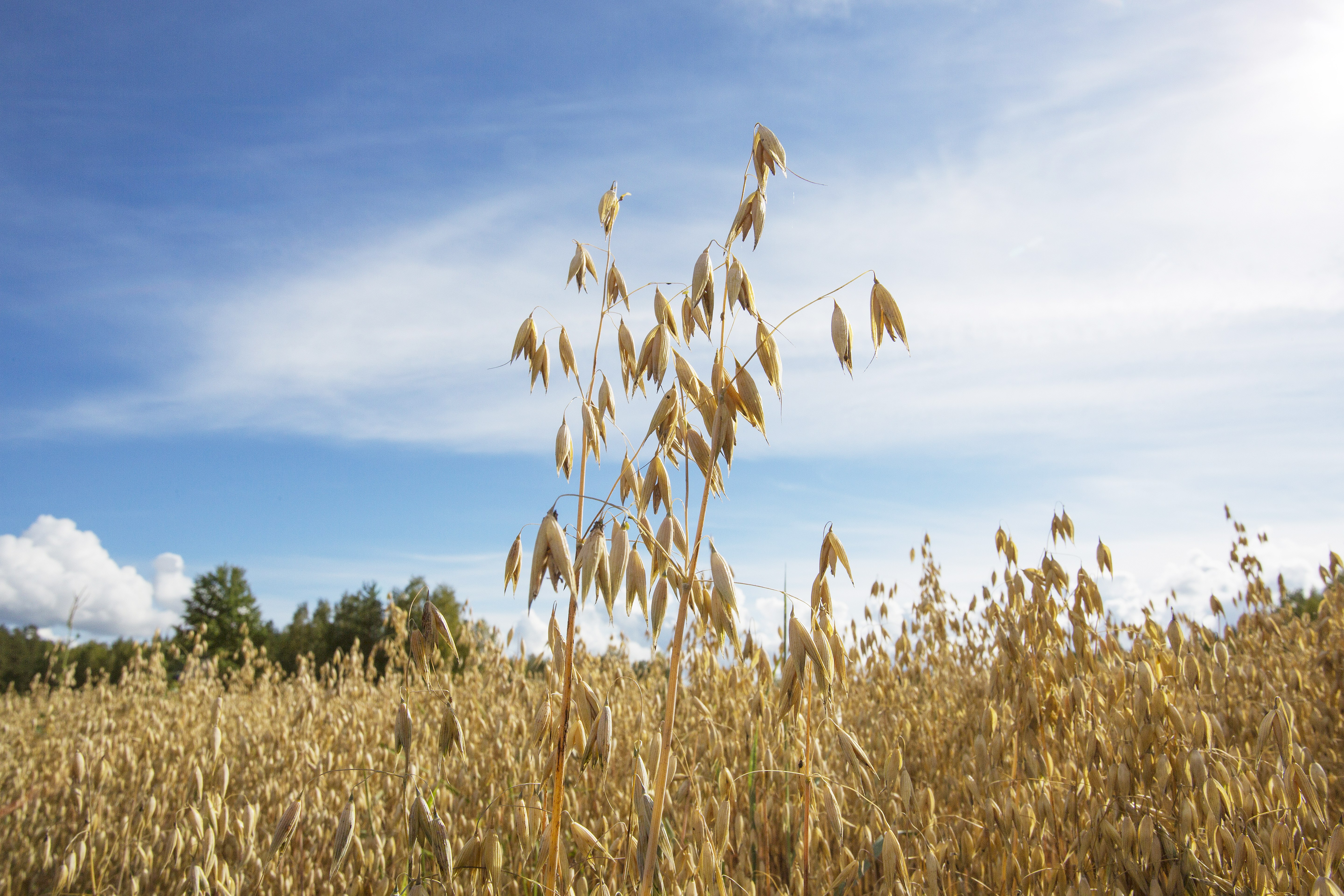Oats
Finnish oats are high in quality, light, large-grained and low in shell. Their strengths are best described in terms of safety and cleanliness.
The cold arctic winter and frost kills plant diseases and pests. This means fewer plant protection prod-ucts are required in Finland and the pesticide residue risk is low.
In general, warm weather is of great importance to cereal growth, but less relevant to the oat which thrives in a cool place and is well-suited to Finnish acidic soils. The cool air combined with appropriate humidity supports the full development of oat grain cells and the size and high hectolitre weight of the kernel.

The Finnish growing season offers long, light days which are ideal for intense cereal growth. The longer the day, the faster the cereals will develop, and the intensity of growth is accelerated by the surprisingly high average daily temperatures caused by the warm Gulf stream.
The peat-based and acidic soils typical to Finland are ideal for oats. In addition, the concentration of heavy metals in the soil is low, supporting a low level of heavy metals in the crop.
Oat is positively affected by our arctic conditions and also has a positive effect on the soil and water, need-ing less pesticide than wheat or barley.
Our Arctic conditions have formed a reference frame-work for the development of oat varieties. Those suitable to the challenging conditions have been developed using top research expertise in Finland.
The cool air combined with ideal humidity supports the maximisation of oat grain cell numbers and the size and high hectolitre weight of the kernel.